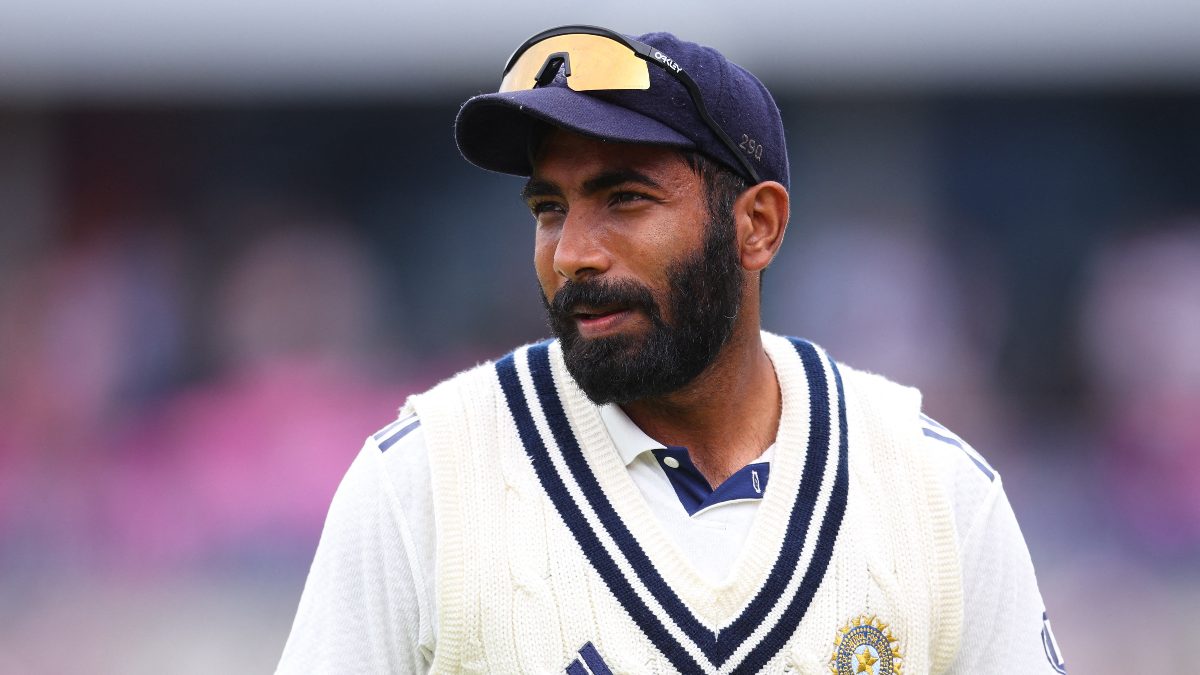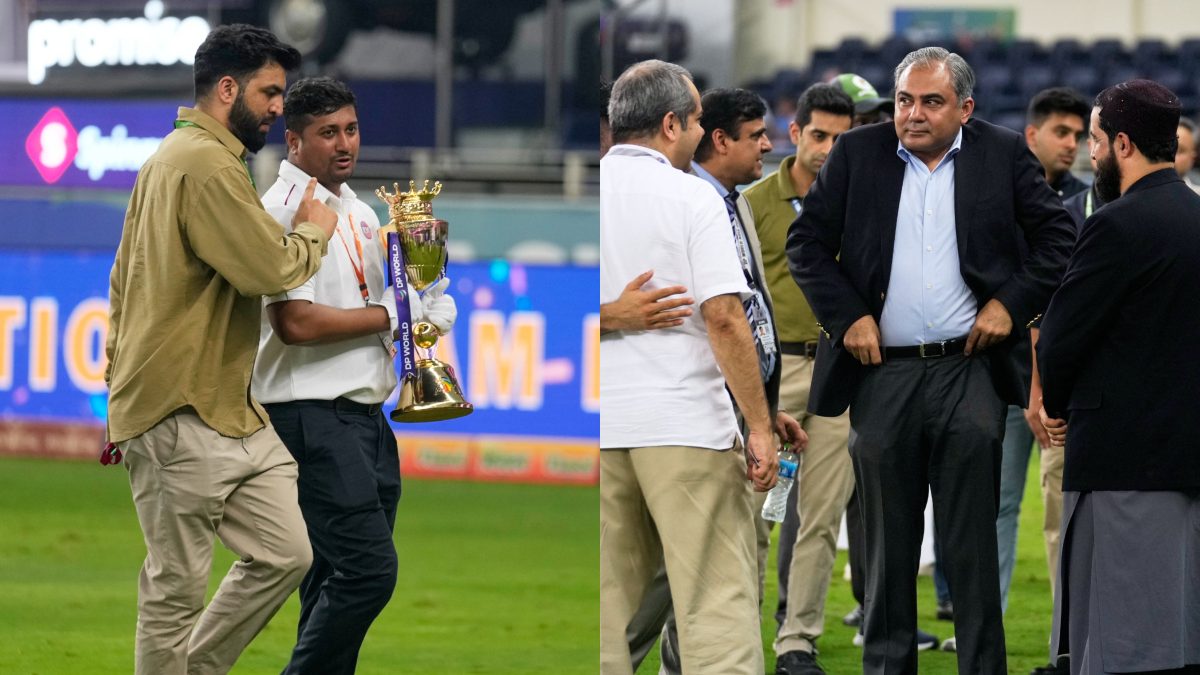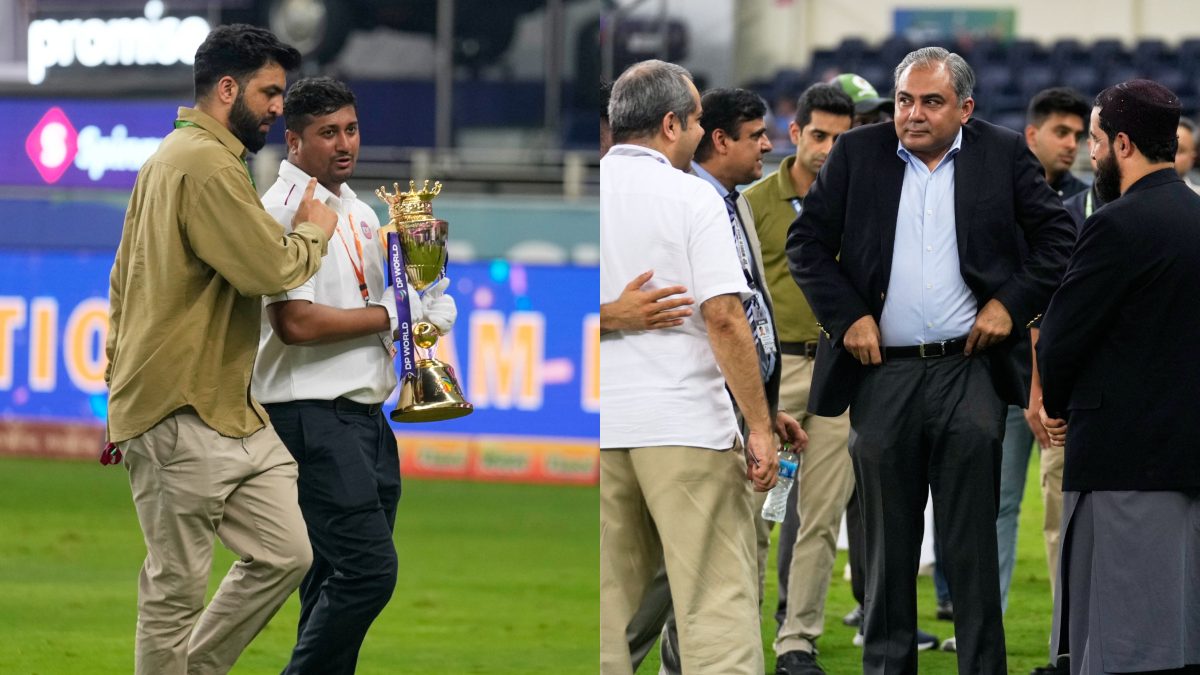September 30, 2025. Opening day of the Women’s World Cup. India put into bat in Guwahati, and made a decent fist of things when the rain first arrived after ten overs. Smriti Mandhana is back in the shed, which has led to a slightly lesser scoring rate than usual, but Pratika Rawal and Harleen Deol have not shown any nerves and are keeping things ticking, even if they are not tormenting Sri Lanka.
At one stage, after 19.1 overs, India are 81-1. Not world-beating, but a solid enough foundation to build upon. Then, Rawal departs while trying to up the ante. Deol follows suit soon after, and before India and their fans can even comprehend how Deol has spooned a simple catch to extra cover, Harmanpreet Kaur, Jemimah Rodrigues and Richa Ghosh join Deol and Rawal in the pavilion.
India, in a trice, are tottering at 124-6. More than half their side has been dismissed and the pitch, which looked flat earlier, now seems to house demons. The ball is spinning. It is holding. It is bouncing a touch extra, and Sri Lanka are getting it to do all those things.
All-rounders bail India out vs Sri Lanka
But India have been here before. Most notably in the opening game of their previous Women’s World Cup campaign in Mount Maunganui. Pakistan were the opposition, but the circumstances felt similar. Until Pooja Vastrakar and Sneh Rana dug them out of a hole.
And on Tuesday, Amanjot Kaur and Deepti Sharma, rather thankfully for India, produced an encore.
Both of them, from the moment they got together, portrayed the right intent and the right mindset. It would have been very easy for India to retreat into their shell, but this pair ensured they did not. The strike was rotated freely and while that only added one run at a time to the scoreboard, it seemed to rattle Sri Lanka.
Impact Shorts
More ShortsThe Islanders, despite being in a situation where they were controlling the game, tried forcing things and started to err. Sometimes in line, sometimes in length, and far more often in the field than they had up to that point. And that was only down to India keeping things moving, even though there was the temptation of standing still and letting the tempest pass.
That was probably the most refreshing aspect of this partnership. It was in stark contrast to what Deol and Rawal had done during their stand. They managed a total of ten boundaries (nine fours, and one six) but scored their 85 runs at a combined strike rate of 69.1.
Amanjot and Deepti, meanwhile, mustered 110 between themselves, and those came at a tick over run-a-ball, despite the latter pair only hitting nine boundaries (eight fours, one six). It must also be noted that they batted in a much tougher period, when India were right under the pump, as opposed to when India were setting the game up.
That momentum was then carried on by Sneh Rana, another very handy lower-order batter. She struck at 186.66 and her 15-ball 28 ensured that India went well past 250, meaning that even when Sri Lanka threatened to give it a rattle, the runs mustered by Amanjot, Deepti and Rana were enough to see India through.
But are India taking too much risk with five bowlers?
That, though, opens up another debate – of whether India are right to pack their batting, especially when it comes at the cost of a frontline bowler. In playing Amanjot at number eight, India left out Renuka Singh and Radha Yadav – the former being a genuine wicket-taking option with the new ball. It meant that India only had five bowlers (including Amanjot and barring Harmanpreet and Rawal), which when teams come at India, as Sri Lanka did, could cause them problems.
Moreover, this promises to be a high-scoring Women’s World Cup. Pitches are expected to be flat, and there has been an unparalleled power surge in the game. Not to mention that dew will be a factor, with all but one match beginning at 3pm local time.
And that is the trade-off India will have to make. There may not be a right or wrong answer to this. Because this is not a black and white question either. On some days, India will need the extra batting, especially if they were chasing against a similarly powerful batting side. On some days, when they are defending, they might not mind the extra wicket-taking bowling option.
But what is needed on which day is a quandary that the best teams, over the years, have struggled to decipher. And that may yet be India’s biggest challenge.
Against Sri Lanka, they saw the benefit of Amanjot batting at eight, but they also experienced the pitfalls of having just five frontline bowlers. It did not hurt them in terms of the result, but it did illustrate how it could in the future.
This was meant to be a night where India flexed their batting muscles, put up a show in front of a record 22,843 fans in Guwahati, and told the rest of the world that they intend to dominate this Women’s World Cup with style and zest. Instead, it became an occasion where their lower order, not for the first time in a Women’s World Cup opening game, had to rescue them.
That is not a bad omen per se. Champion teams usually develop a reputation of being able to fight back from any and every situation. From that perspective, this was maybe what was needed, even if it was not what India would have wanted.
Amanjot and Deepti, through their century stand, showed and proved that they have what it takes to navigate potential snags, and ensure that mini-collapses do not turn into a more prolonged period of crisis.
Some will, of course, say that better teams, those of Australia, England, New Zealand or South Africa’s ilk, will punish India if they slip to 124-6 batting first. Or that their decision to rely on all-rounders more than specialist bowlers will cause them grief and is flirting with fire. Especially if the opposition is 82-1 after 14.5 overs, chasing a score that requires less than run-a-ball.
The flip side, though, is that if India can win even when not at their best, they should be fine when they do hit their straps. And for now, the latter narrative, after an opening-day win, will come through much stronger. India will hope that is the case moving forward too.


)

)
)
)
)
)
)
)
)



